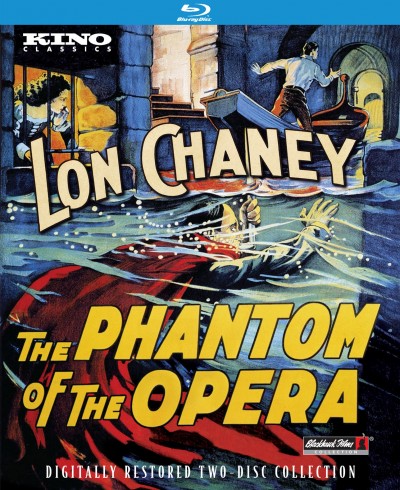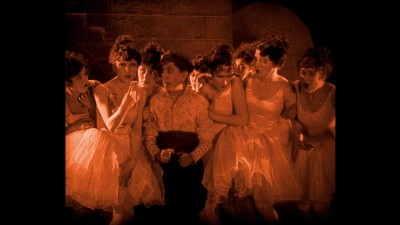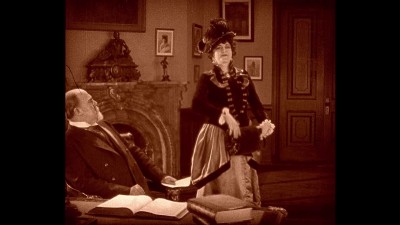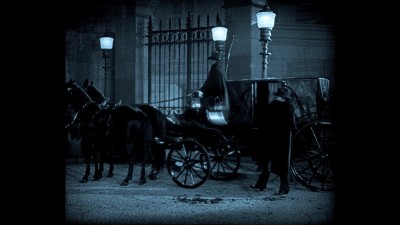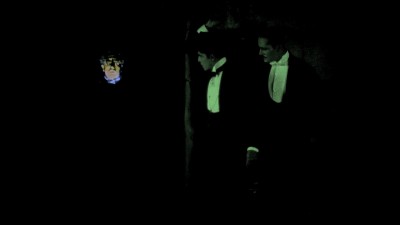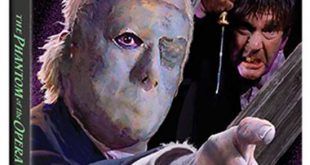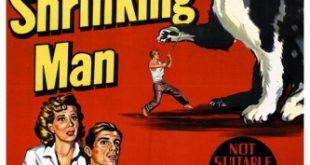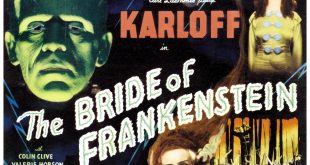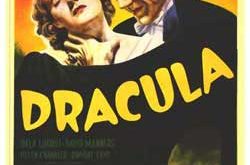SYNOPSIS:
During a production of Faust, an opera singer named Carlotta, who is portraying the character of Marguerite, is approached by a strange gentleman who forces her to give the role to her understudy, Christine Daae, a woman whom he is in love with. When it comes to light that the man is horribly disfigured, a series of unfortunate events ensues…
REVIEW:
I am embarrassed to admit this, but although I have been a horror film fan for nearly 35 years, I have never seen Rupert Julian’s The Phantom of the Opera (1925), which is based upon the 1909 novel of the same name by Gaston Leroux. Although Mr. Julian received screen credit for directing this film, several others also had a hand in it, among them Edward Sedgwick, Lon Chaney, Sr. (he played the titular character), and Ernst Laemmle (Universal Studios founder’s Carl Laemmle’s nephew).
The film concerns the opening at the Paris Opera House of a new staging of Charles-François Gounod’s Faust. Philippe (John St. Polis) and his brother Raoul (Norman Kerry) are seated in the audience, the latter hoping to hear the singing of his love, Christine Daaé (Mary Philbin), who began her theater career as a member of the chorus, but who is now the understudy for the lead role, Madame Carlotta (Mary Fabian, depending on which version of the film you watch). Raoul wants Christine to give up her career and marry him, but she has no intention of doing so. Meanwhile, there is a rumor going around the theater about an “Opera Ghost” who always sits in Opera Box #5. Management looks at this as humorous, but they soon regret being so flippant as the appearance of a strange man who hangs around the dwelling gives rise to talk among the crew. One of the stagehands is consulted and he describes the image of a skeleton that is alive.
At the same time, Madame Carlotta has just received a letter from The Phantom, and he demands that Christine play the role of Marguerite…or else he will put a hex on the place. Christine is then told by the voice of The Phantom that she must do as he demands. After Raoul asks her to once again think about what he asked, she has more of a desire to sing. After Carlotta sits out the performance, Christine takes her role and a shadowy figure appears in Opera Box #5 – but quickly disappears. When Carlotta plays the role the following evening, the curse causes an enormous chandelier to fall on to the audience wherein panic ensues. Christine ends up in The Phantom’s abode where he calls himself Erik, and he plays the piano, admonishing her never to see him without a mask that he wears. Naturally, she is tempted and when she removes his mask, she nearly faints from the grotesque image that makes up his face. He keeps her as a prisoner and wants her to promise that she stay with him forever. But she has other plans…
Lon Chaney is deeply affecting as the cursed Phantom who professes his love to Christine, only to be rebuffed by her reaction to his face. The other supporting performers are quite good, too. If the film seems familiar, it’s because it has been aped and parodied by so many other films. Brian De Palma’s The Phantom of the Paradise (1974) is a wonderful send-up on the whole affair; Dario Argento’s Opera (1987) is also heavily inspired by this work and is far superior to his own Phantom of the Opera version from 1998.
The film has been available in many home video versions on many formats (it looks as though it had been in the public domain), but now Kino Lorber, which has been doing a bang-up job of releasing movies with special editions, has brought a wonderful 2-disc Blu-ray to the fans which contains three versions of the film with some really neat goodies. For one thing, just like the past releases of F.W. Murnau’s Nosferatu (1922), these versions have a multitude of alternate musical scores. New music is composed and performed by Alloy Orchestra, and theatre organ score is arranged and performed by Gaylord Carter. Yet another one includes a score by Gabriel Thibaudeau and an audio commentary by John Mirsalis who offers a wealth of information regarding the making of the film. You also get to choose between watching 24 frames-per-second and 20 frames-per-second versions, something that I have not seen offered before. There is also a roughly 54-minute version of the 1930 sound re-issue (something I never knew about); the original screenplay is run through its entirely set to music, and unbelievably awesome idea; an interview from 2004 with Mr. Thibaudeau, and some Paris travel films.
If you’re looking for the definitive version of The Phantom of the Opera, this new set is probably the one that you have been looking for.
 Horror News | HNN Official Site | Horror Movies,Trailers, Reviews
Horror News | HNN Official Site | Horror Movies,Trailers, Reviews
